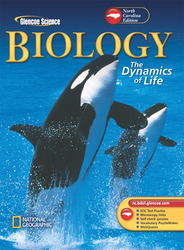

Biology: The Dynamics of Life, North Carolina EditionChapter 3: Communities and BiomesIn the NewsCounting the Ocean’s Population The Census of Marine Life, known as CoML, is a project that began in 2000. According to this organization’s Web site (http://www.coml.org/coml.htm), its ambitious goal is, “to conduct research that leads scientists around the world to assess the diversity, distribution, and abundance of ocean life, and how it changes over time.” The project is slated to be completed by 2010, though the project’s tasks may never actually be finished. What Does It All Mean? How Does CoML Break Down? The History of Marine Animal Populations will take an historical look at populations of animals in the ocean. This will provide a way to investigate how humans have had an affect on the ocean and its inhabitants. The Future of Marine Animal Populations will use the data collected in the Census of Marine Life to create mathematical models to analyze and predict changes to the ocean’s inhabitants. The Biogeography of Deep-Water Chemosynthetic Ecosystems will explore chemosynthetic environments to understand more about the types of marine species that live in these unique parts of the world’s oceans. The Census of Diversity of Abyssal Marine Life will document the types of organisms that live in deep ocean environments. The Gulf of Maine Project will study a 90,700 square-km ecosystem in North America to compose a complete picture of the diversity of organisms that live there and the changes brought about by human and natural influences. The Mid-Atlantic Ridge Ecosystem Project will investigate this relatively unexplored and extreme region of the Atlantic Ocean in order to learn more about the features of this deep ocean region and the organisms that live there. The Natural Geography in Shore Areas Project will create a complete picture of the marine animals that live in the inshore zones of the world’s oceans. This is an especially important CoML project because it focuses on the areas of the ocean at depths of less than 20 meters, the part of the world’s oceans that most people are familiar with and interact with. The Pacific Ocean Shelf Tracking Project will examine conservation efforts to study Pacific salmon as they migrate between river and ocean environments. Pacific salmon have been implanted with electronic tagging technology to study their movements. The Tagging of Pacific Pelagics will study the migration patterns of animals such as whales, sharks, and seals that live in the vast open areas of the North Pacific Ocean. How Many Fish In the Sea? Activity Resources
|  |















